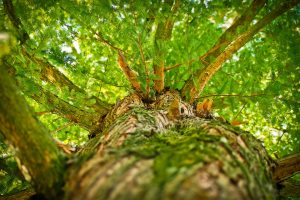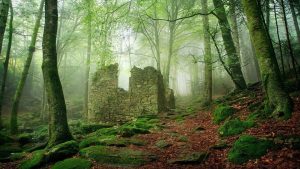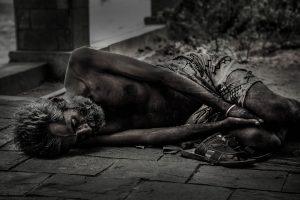“Trees also understand that slowness is the key to a good life. For humans, at the moment, it feels like life is going faster and faster. This way of living uses up so much energy that the quality of our lives doesn’t get better. We should slow down.”
– Peter Wohlleben –
My father has always maintained that Mother Nature is the best teacher. He laments our modern day disconnect from the wild and the sense of ‘lostness’ that so many feel amidst our techno-driven, hyper-real existence. So it was with interest that I read the interview with
Peter Wohlleben in the recent
Slow Magazine and his study on
The Hidden Life of Trees.
Peter’s premise is that trees, like us, experience pain, and form social and family bonds. His years of research have him conclude that different trees have different personalities. Some act as parents and good neighbours, while others are brutal bullies. Trees are anthropomorphic. It is almost as if they have feelings and character. They communicate via a ‘woodwide web’ of chemical and electrical signals. Their young ones takes risks and then learn life lessons from their mistakes. It is like trees form villages, recognising their friends from strangers.
As I fell down the rabbit hole of reading article after article about Wohlleben’s study of the ancient beech forest he manages in the Eifel mountains of Western Germany, I was reminded of my father’s sentiment – Mother Nature is a much better teacher than humans. While we wax lyrical about community and philosophise about life, trees just simply live their ‘philosophy’. No wonder one of the wisest men in ancient text studied the cedars of Lebanon and nature (1 Kings 4:33). Jesus himself suggested that we look at nature to obtain wisdom and meaning (Matthew 6:26).

Wohlleben points out the communal nature of trees. In a tree community, every member is important, including the ‘weak’ ones:
“Their well-being depends on their community, and when the supposedly feeble trees disappear, the others lose as well. When that happens, the forest is no longer a single closed unit. Hot sun and swirling winds can now penetrate to the forest floor and disrupt the moist, cool climate. Even strong trees get sick a lot over the course of their lives. When this happens, they depend on their weaker neighbors for support. If they are no longer there, then all it takes is what would once have been a harmless insect attack to seal the fate even of giants.”
and
“Every tree, therefore, is valuable to the community and worth keeping around for as long as possible. And that is why even sick individuals are supported and nourished until they recover. Next time, perhaps it will be the other way round, and the supporting tree might be the one in need of assistance.”
Wohlleben has observed the friendships between trees, some deeper than others. They grow but don’t compete with each other and “if you fell one of those two trees, the other will die too, like an old couple.”
Trees teach us about life and community. In our very important, crazy-busy lives, we seldom notice their quiet and majestic presence. Unlike trees, our ‘developed’ world tends to shove our frail and ‘weaker’ members into places where they are not seen, somewhere on the margins where their presence does not taint our perfect image or require our time and understanding. We build on ideas about community that are quickly dismantled in times of crisis. We betray each other by the disregard we display to these very ideals. The ancient forests teach us that every tree plays a role. Even the oldest, frailest stump is cared for and significant.
In this Year of Discernment, I have found the learnings about trees astounding and healing. I no longer stare past them as I look out my window. I notice these giant teachers of life. I find hope in their presence. Perhaps one day us humans can become as kind and learn to love our neighbour as these ancient Douglas firs and beeches?
“A community that is growing rich and seeks only to defend its goods and its reputation is dying. It has ceased to grow in love. A community is alive when it is poor and its members feel they have to work together and remain united, if only to ensure that they can all eat tomorrow!”
– Jean Vanier, Community and Growth –


